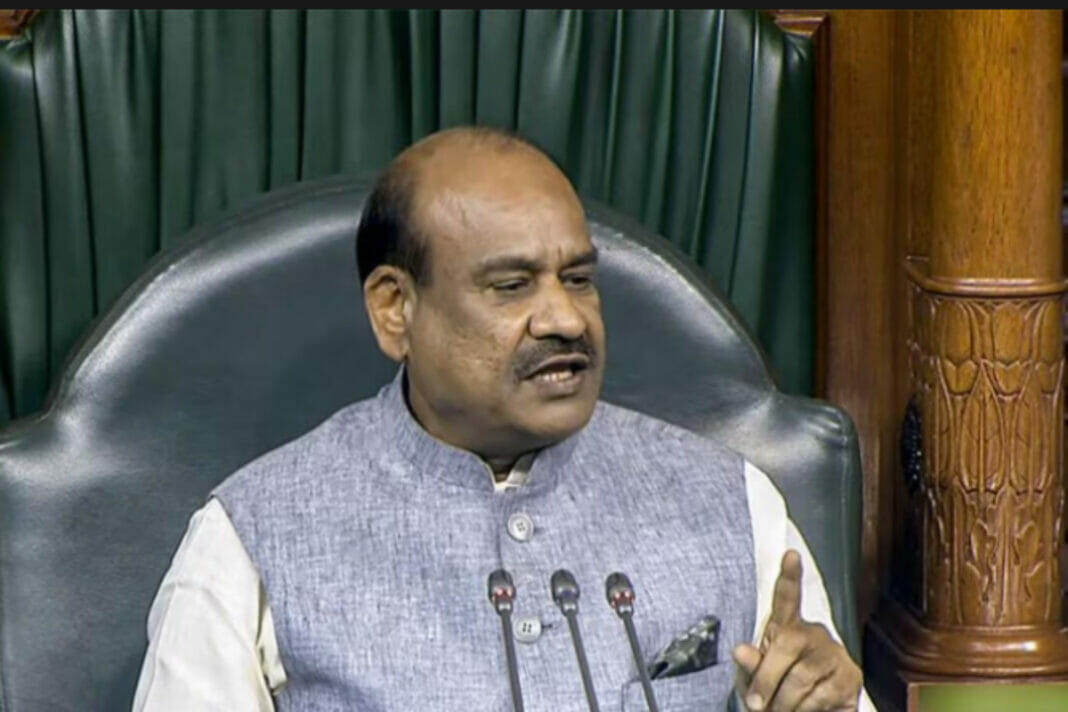No-Confidence Motion in Lok Sabha: On Wednesday, Speaker of the Lok Sabha Om Birla accepted the notice of a resolution of no confidence in Prime Minister Narendra Modi’s administration from the opposition Indian National Developmental Inclusive Alliance (INDIA). Assam-born Congressman Gaurav Gogoi presented the notice earlier at 9:20am as part of the INDIA grouping’s effort to compel Modi to respond to concerns like the violence in Manipur.
Speaker Birla to Consult All Parties on No-Confidence Motion; Discussion Schedule Awaited
Birla said he will discuss the matter with all parties, and according to the rules. “I will inform you about the schedule for the discussion.” Any no-confidence notice lodged before 10am must be heard the same day, per the rules. People with knowledge of the situation said it was doubtful that the motion will be discussed in Lok Sabha on Wednesday. The notice was brought forward as a result of parliamentary squabbles, interruptions, and the BJP‘s defiance of the opposition’s demand that Modi address the Manipur problem. In a letter to the leaders of the Opposition on Tuesday, Union Home Minister Amit Shah offered a discussion on the situation in the northeastern state in an effort to end the impasse in both houses of Parliament.
No-Confidence Motion Discussed by INDIA Officials; 332 Lok Sabha Members Support Resolution
On Tuesday, INDIA’s top officials discussed a motion of no-confidence. Trinamool Congress’s Rajya Sabha floor leader Derek O’Brien later tweeted: “The overall Parliamentary strategy is in place for the INDIA parties. Tactics to execute that strategy evolve every day. Rule 198 of the Lok Sabha states the procedure of moving a no-confidence motion. Picture abhi baki hai (wait and watch)!” The no-confidence resolution poses no threat to the government because it has the support of at least 332 Lok Sabha members. Wednesday morning, the Congress issued a three-line whip requesting the presence of its members. According to Lok Sabha norms, the proposal must have the support of at least 50 lawmakers. The initial motion of no-confidence in the Modi administration was unsuccessful on July 20, 2018. That motion was made by MP Srinivas Kesineni of the Telugu Desam Party. During the discussion of that motion, Congressman Rahul Gandhi walked over to the Treasury benches and gave Modi a bear hug.
Lok Sabha Rules for Moving a No-Confidence Motion Explained
A member must request permission to move the motion when the Speaker calls for it, in accordance with Lok Sabha Rule 198 (1). A member who requests leave must give notice to the Lok Sabha secretary general by 10am for it to be considered that day. In the House, the Speaker will “request those members who are in favour of leave being granted to rise in their places, and if not less than fifty members rise accordingly, the Speaker shall declare that leave is granted”, the rule says. When the notice is accepted, the Speaker allows “a day or days or part of a day for the discussion of the motion”.
Opposition’s Demand for Manipur Response Leads to Parliamentary Shutdown
Due to their demand that Modi speak about the violence in Manipur, the Opposition shut down parliamentary business for three days during the monsoon session. Sonia Gandhi, who was then the head of the Congress, proposed a no-confidence motion against the Atal Bihari Vajpayee administration in 2003. The motion was lost following a discussion that began with Gandhi’s “charge sheet” against the government. The following year, Vajpayee lost the general election. According to opposition leaders, talks between leaders of the Congress and Trinamool Congress to introduce a resolution of no confidence began on Monday morning. At the Opposition’s floor strategy meeting on Tuesday, Rahul Gandhi, who was earlier this year disqualified from the Lok Sabha, was consulted before the decision was made.
Keep watching our YouTube Channel ‘DNP INDIA’. Also, please subscribe and follow us on FACEBOOK, INSTAGRAM, and TWITTER


